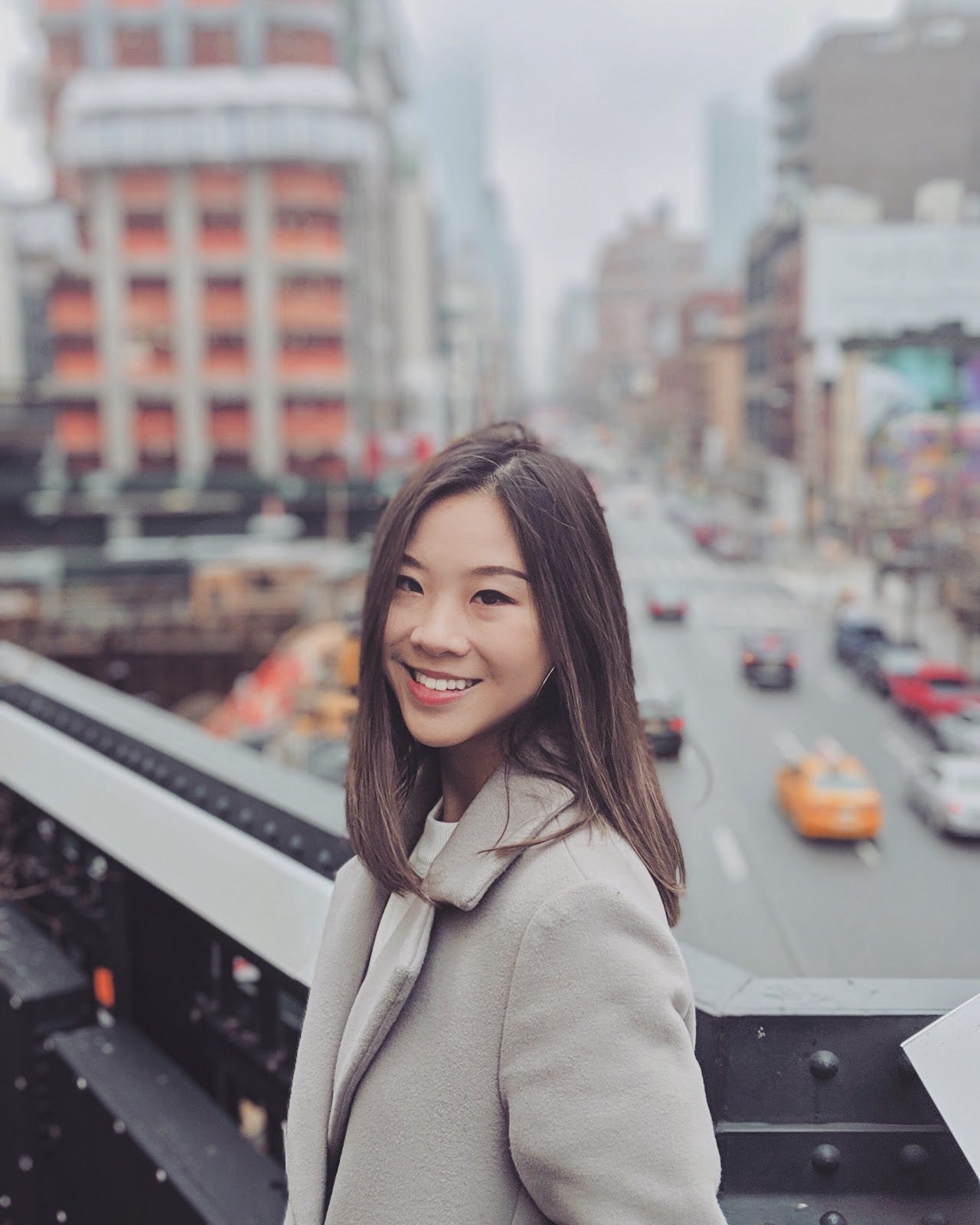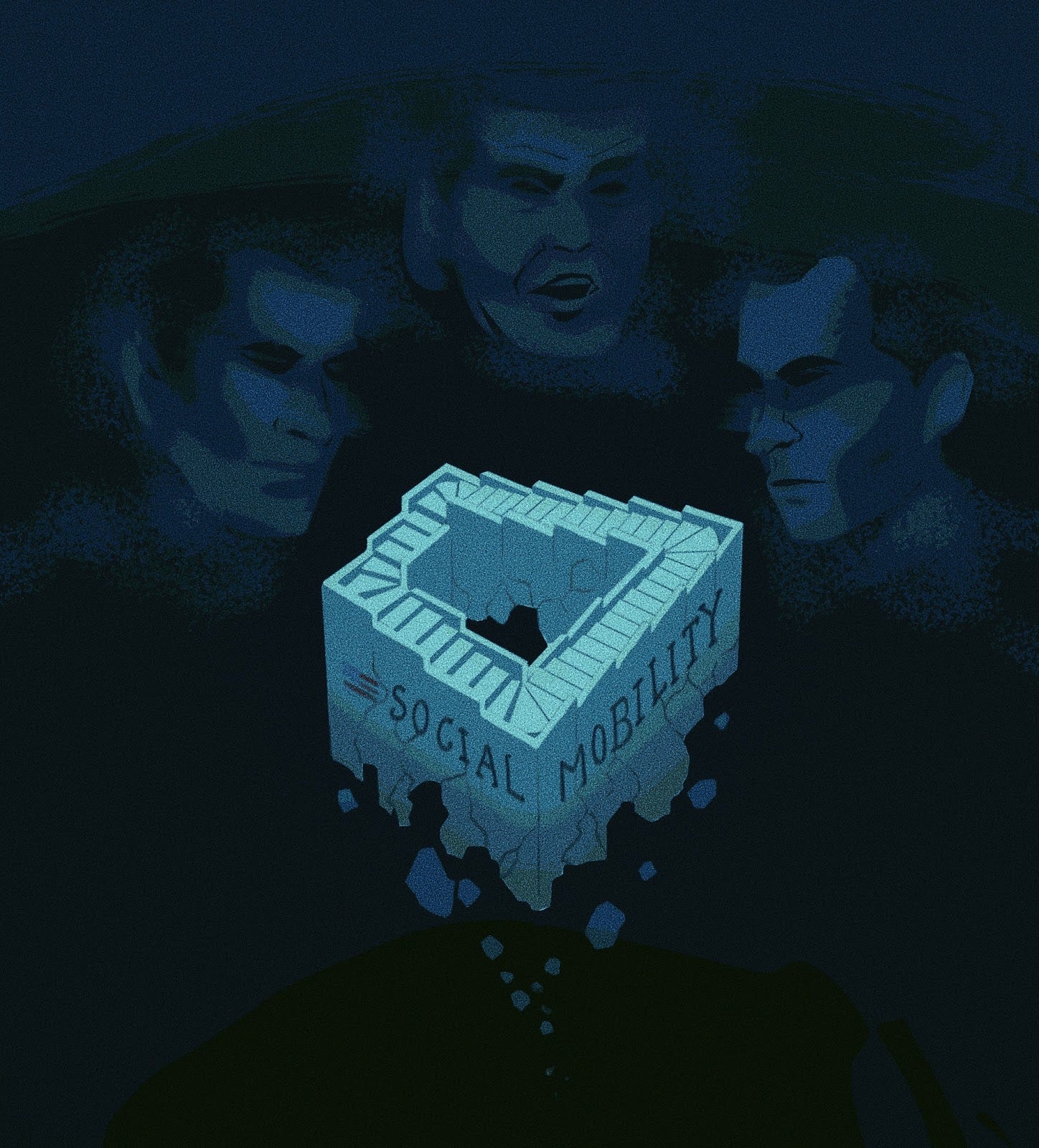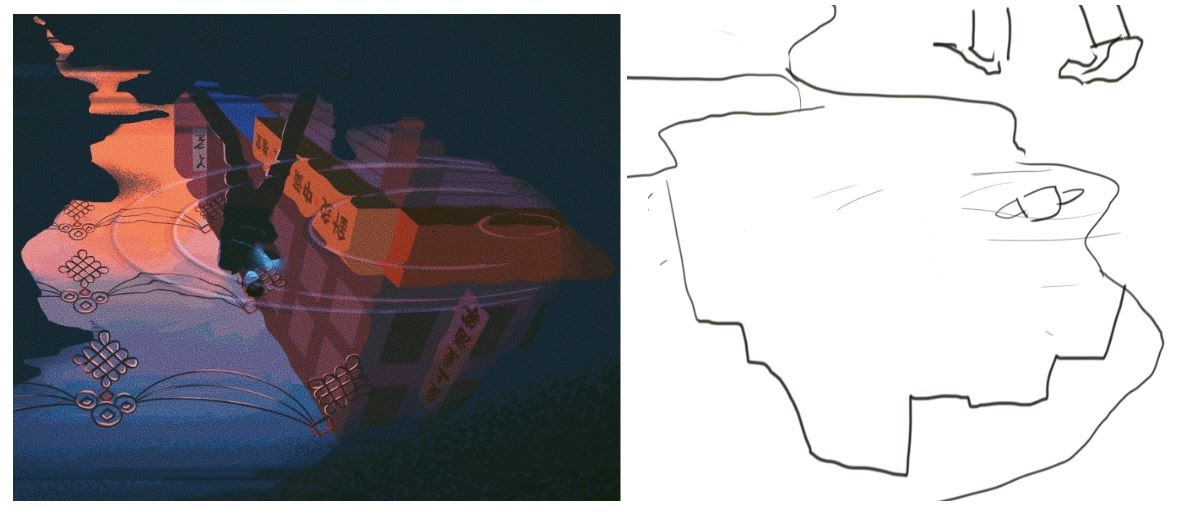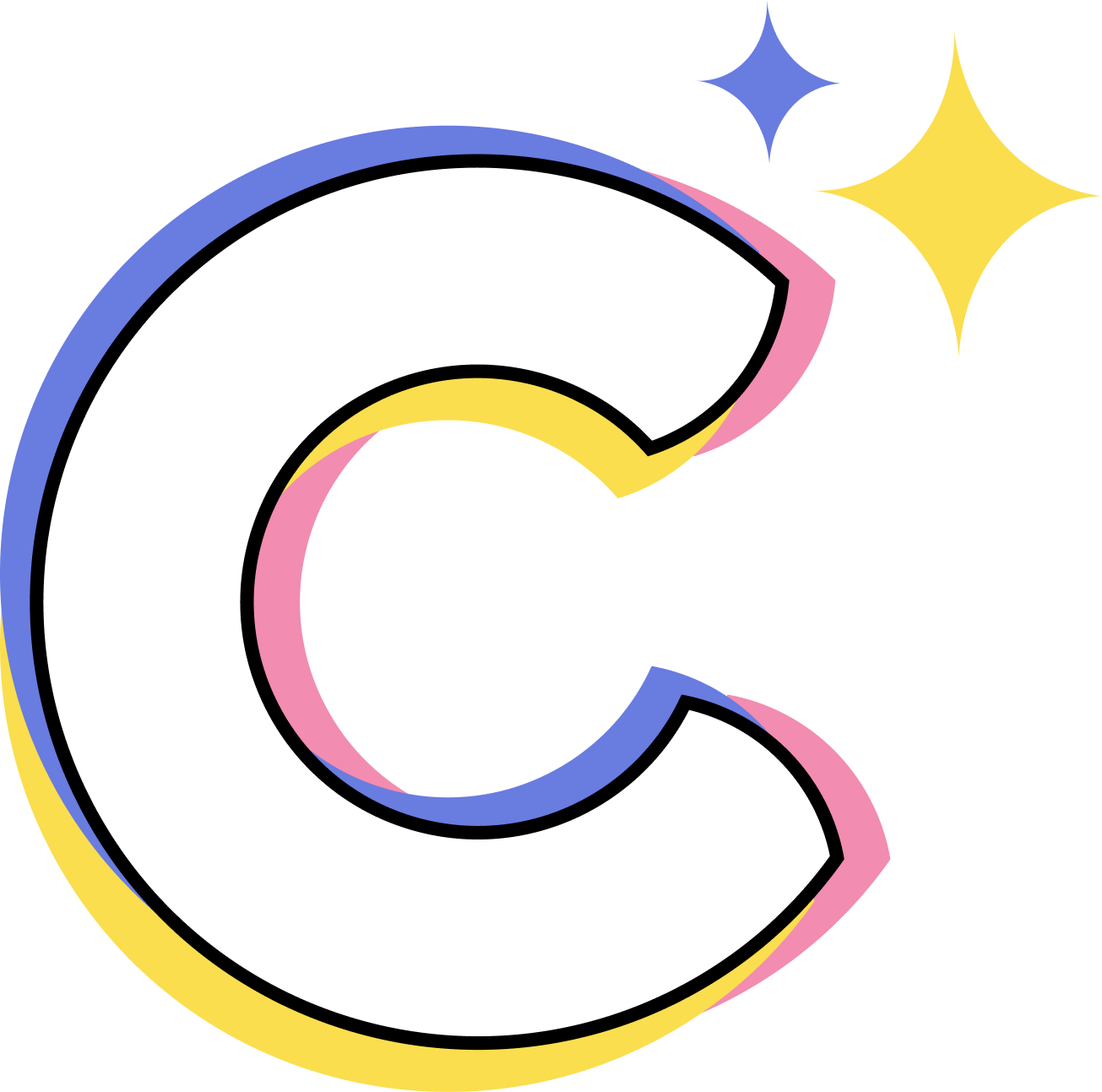[Featured Creator] 👀 Meet Sophia, a visual storyteller.
✨ Creator Profile
Sophia Deng ‘19 never expected to find art as her calling. Originally an Info Sci major at Cornell, her illustrations were at first only a hobby. But now, entering the School of Visual Arts in NYC for her Master’s, Sophia finds herself hoping to venture into the world of editorial illustration, intent on conveying a message to her audience. Pulling from her Asian American experiences as well as current events and academic concepts, she is both an illustrator and a storyteller.

Capturing the reality of the world around us and bringing it to life, her pieces are introspective and serious, yet hopeful as well. They are characterized by the beautifully rendered backgrounds and moody lighting that evokes a certain atmosphere and emotion. The influence of her experience with vector art is also clear, the clean lines and solid colors prominent in each piece.
🏙️ The American Dream
One of Sophia’s recent pieces, titled The American Dream, is a bold depiction of America and it’s claims of social mobility and freedom. More illusion than reality--and a crumbling one at that--Sophia presents a clear perspective on the truth behind the concept of the American dream.
Q: Where did your spark for the piece come from?
I think ever since George Floyd was murdered--that was the initial spark. Watching all the protests happen across the world, it wasn’t just about what happened to him but what happened to so many other people. It was also about the daily injustices that a lot of people face.
But I think there was another thing that inspired it, which was the fact that people always talk about America, saying “Oh yeah, there’s a lot of opportunity for social mobility here,” like you’re supposed to have the opportunity to do anything. But I think especially as Coronavirus has shown, that’s not really true. It exposed a lot of the gaps. I worked off of that idea and came up with a lot of different iterations. I ended up settling on the penrose stairs--an impossible structure that seems like you’re going up or down when really you’re not going anywhere.

Q: How has this piece changed from your original vision for it?
At first, the vision was very vague. I think the backbone of a lot of problems here is wealth inequality, and I was toying with the idea of money for a while. I tried illustrating it in several forms, but I just didn’t like it.
I remember the turning point. I was thinking about Parasite [a 2019 film]. It has a theme about social mobility and how the system makes it hard for certain people to get to the top no matter what they do. A big symbol in the movie is staircases, and that made me think of the staircase illusion. That was how I evolved from wanting to work with money directly to this more conceptual piece.
Q: What’s the first thing that you want someone to notice about this piece?
The first thing I wanted to draw attention to was the impossible staircase and the fact that it’s crumbling. But the second thing I want people to notice is the faces. Those sort of symbolize the people who have created the system and are watching it affect people disproportionately but refusing to do anything about it.
💡 Creative Journey
Q: Where do you get your creative inspiration for your work, and how has your creative work influenced your life?
I would say Instagram is good for finding other artists I admire. I use Pinterest a lot, mostly for visual references. I also get inspiration from news articles and books, mostly because I want to start moving towards more conceptual illustrations. My inspiration for that usually comes from reading something, and I’m like “Oh, it would be interesting to try to visualize this, somehow.”

I think my work has definitely made me reconsider what I considered to be “valuable” in my life. I like illustrating because it forces me to learn more, too. Now, ever since I started moving towards the editorial illustration path, I’ve been on the lookout for different sources of material, different texts, different books, different articles. I’m still relying on a lot of visual inspiration, but my inspiration now is more concept and article heavy. It exposed me to more news and commentary on what’s happening today, and I really like that. It’s made me into someone who cares more about what’s happening in the world, and I really care about translating those different concepts that might be complex to other people.
Q: What have you learned about yourself as a result of being an illustrator?
In order to be a good illustrator or artist, I have to be really sensitive to things and observant. Especially being Asian American, you’re told to assimilate to certain values and that being quiet or sensitive aren’t exactly some of the best things to be. But it’s possible to change things and be a leader in your own way by being sensitive and observant. Without being an illustrator, I would’ve realized that later or never would have realized it at all.
Q: Do you want your creative pursuit to become your full time job? Why or why not?
When I first started, I wasn’t really considering it. I’ve been drawing since I was young, but I started having a little bit more free time in the second semester of my junior year, and that’s when I started to pick it up again. Slowly I started to take it more seriously.

I’ve had several pivots in what I thought I wanted to do as an artist. Now, I’ve found a lot of editorial illustrators on Instagram. They’re the artists who work with text and articles or books, and it’s about creating visuals to communicate an idea. I really resonated with that.
That was when I realized I can definitely see myself doing this in some capacity whether it’s just one-off part time work or full time. I try to pace myself and not expect too much too soon. My first passion will always be just creating the illustration itself, and as long as I have time to do that, I’ll be happy.
Q: Is there anything else you’d like to share with aspiring creators?
I would say sometimes there can be the pressure to deliver something really really great. I wouldn’t worry too much about that. I think what kept me going was just enjoying it. Now it’s more serious for me, but I wouldn’t have gotten to this point if I didn’t just do it for fun at the beginning. Sometimes at a place like Cornell, it’s very easy to fall into a trap of, “Oh this has to change someone’s life” at the very beginning, but it doesn’t have to be like that at all. Your practice evolves over time, so it’s totally fine to explore and have fun. The most important part is not putting too much pressure on yourself. I think that’s what’s going to help you keep the momentum.

Do you know the next featured creator? 👀 We want you to share Cornell Creatives with all your creative friends - whether they design, code, make music, edit videos, or channel their creativity in another way!
Our creative space is too hype for creatives at Cornell to miss it, and the best part is: every creator is welcome.
Let them know that you’ve got the best seat in the house for all things creative at Cornell University, and we hope one day they’ll be the star of the show. 🤩


